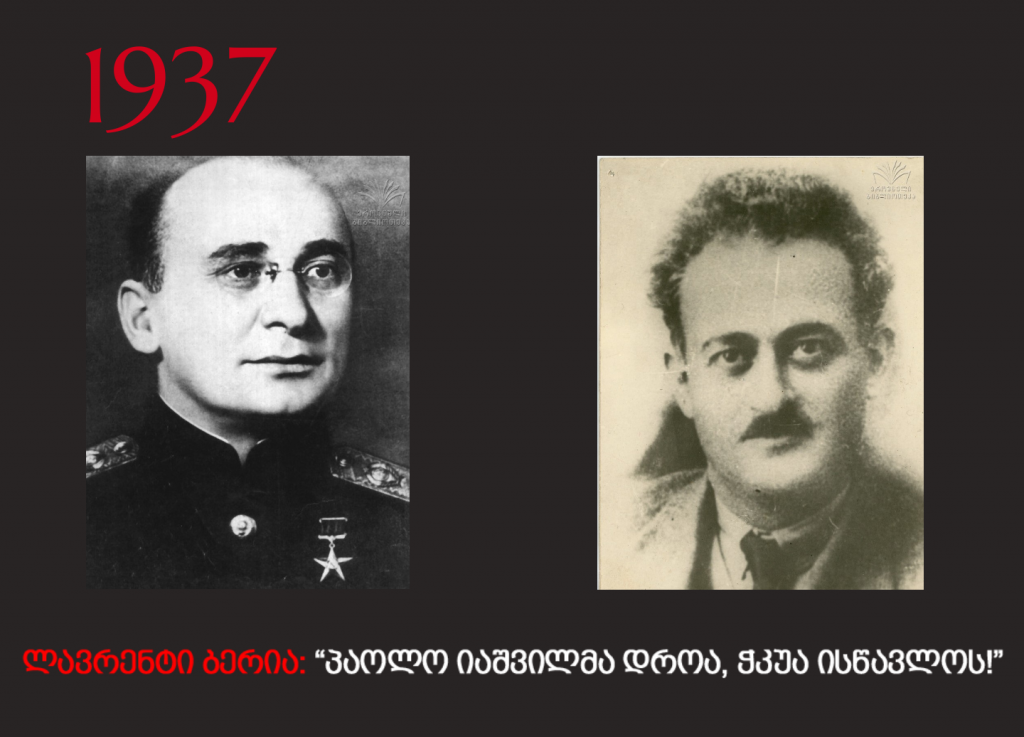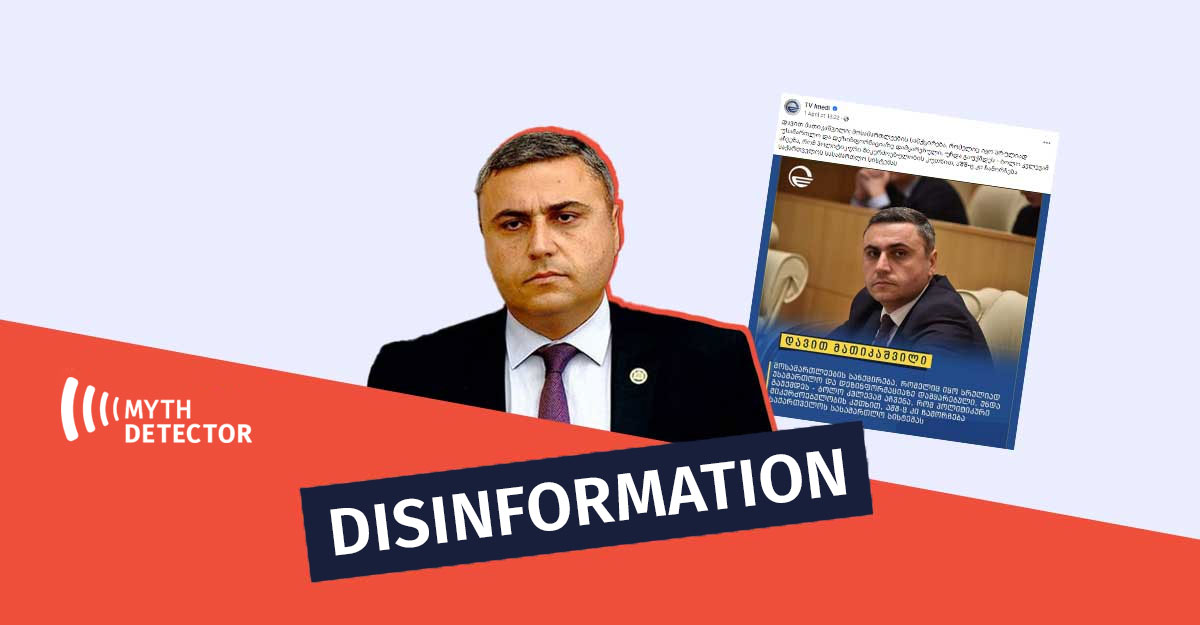On October 27, 2017, an online edition tb24.ge posted an article headlined “They will not forgive you, Lavrenty, they will kill you!” dedicated to Lavrenty Beria’s personality and activities. Although the article does not conceal Beria’s involvement in political repressions and resettlement of North Caucasian peoples, the author still portrays him in a positive context and tries to idolize his activities. The article is about economic reforms carried out by Beria; the author, however, does not mention the issues of forced collectivization. At the same time, the author develops a conspiracy theory about Beria’s death, noting that Beria’s murder was a special operation plotted by the United States and England against the Soviet government.
The material is manipulative, because the author describes Beria’s activities one-sidedly and portrays historical facts only partially that actually aims at stirring up Soviet nostalgia among the readers. Falsification of historical facts or their deliberate concealment is one of the methods of propaganda.
Real Facts
Georgian intellectuals were destroyed upon Beria’s order
Lavrenty Beria made a speech at the 10th congress of the Communist Party in May 1937. In his speech he focused on Georgian writers and creative groups. Shortly after these remarks, “cleansing” of Georgian intelligentsia was launched. The following persons were arrested on various charges (spying, treason, anti-revolutionary activities, etc.), tortured and executed: Mikheil Javakhishvili, Titsian Tabidze, Evgeni Mikeladze, Nikolo Mitsishvili, Sandro Akhmeteli and others.
Ahead of his expected arrest and execution, Paolo Iashvili went to the Writers’ Union office and shot himself dead on 22 July 1937. The Soviet government condemned Paolo Iashvili’s suicide as a provocation against the party and the Soviet government and adopted a decree on burying him as “a people’s enemy.”
Damoukidebloba.com
Beria led the process of forced deportation of Meskhetians
On the basis of Decree No.6279 of July 31, 1944 issued by the USSR State Defense Committee, as well as Order No.00117 of September 20, 1944 issued by the USSR Interior Ministry, on November 15, 1944 tens of thousands of Meskhetians were driven into the freight cars and banished from their homeland without any explanation. Just by decision of Lavrenty Beria, the Central Asia was selected as the resettlement destination. A total of 19 818 families were resettled on that day.
Beria led the process of forced resettlement of North Caucasian peoples
largest forced resettlement was carried out in the Soviet Union from February 23 through March 9, 1944 under the codename Chechevitsa (Lentil). 19,000 officers as well as 100,000 NKVD soldiers from all over the USSR participated in this operation. The operation envisaged forced resettlement of North Caucasian peoples. About 500,000 people were resettled from the North Caucasus to the Central Asia within two weeks.
Beria was one of the instigator’s of the Katyn massacre
In 1940, Beria wrote a letter titled “To Comrade Stalin,” in which he offered the latter to kill Polish officers, soldiers and other prisoners. The letter was verified by signatures of Stalin, Voroshilov, Molotov and other members of the Political Bureau. In April-May 1940, the Red Army took out 22,000 Polish militaries and civilians from prisoner-of-war camps and executed them in three places. Katyn is most famous among the places of mass executions, where the bodies were burnt and buried.
Soviet economy
New Economic Policy (NEP) was the economic policy of the government of the Soviet Union from 1921 to 1928, representing a temporary retreat from its previous policy of extreme centralization and doctrinaire socialism. NEP allowed private individuals to own small enterprises.
Forced collectivization was launched in 1929 that aimed at consolidating individual landholdings and labor into collective farms, so called “kolkhozs”. Agricultural land became “collectivized” as rural households entered collective farms with their land, livestock, and other assets. Collectivization triggered mass protests. The Soviet government carried out punitive measures followed by mass arrests. Under the August 7, 1932 decree, even insignificant encroachment upon “socialist property” was punished by 10 years in prison, while punishment for the misappropriation of cooperative property was the death sentence. The punitive measures were especially grave for people in a period between 1935 and November 1938.
Myth Detector Laboratory
























